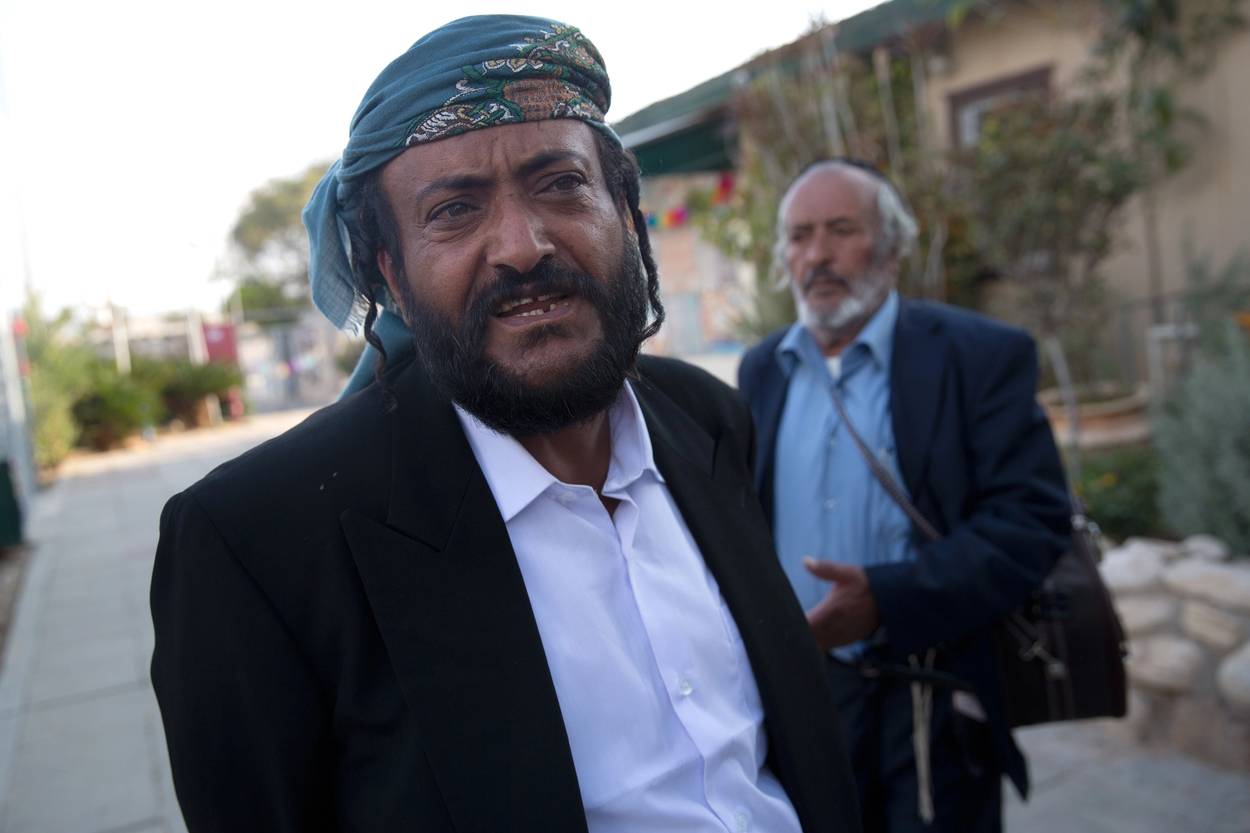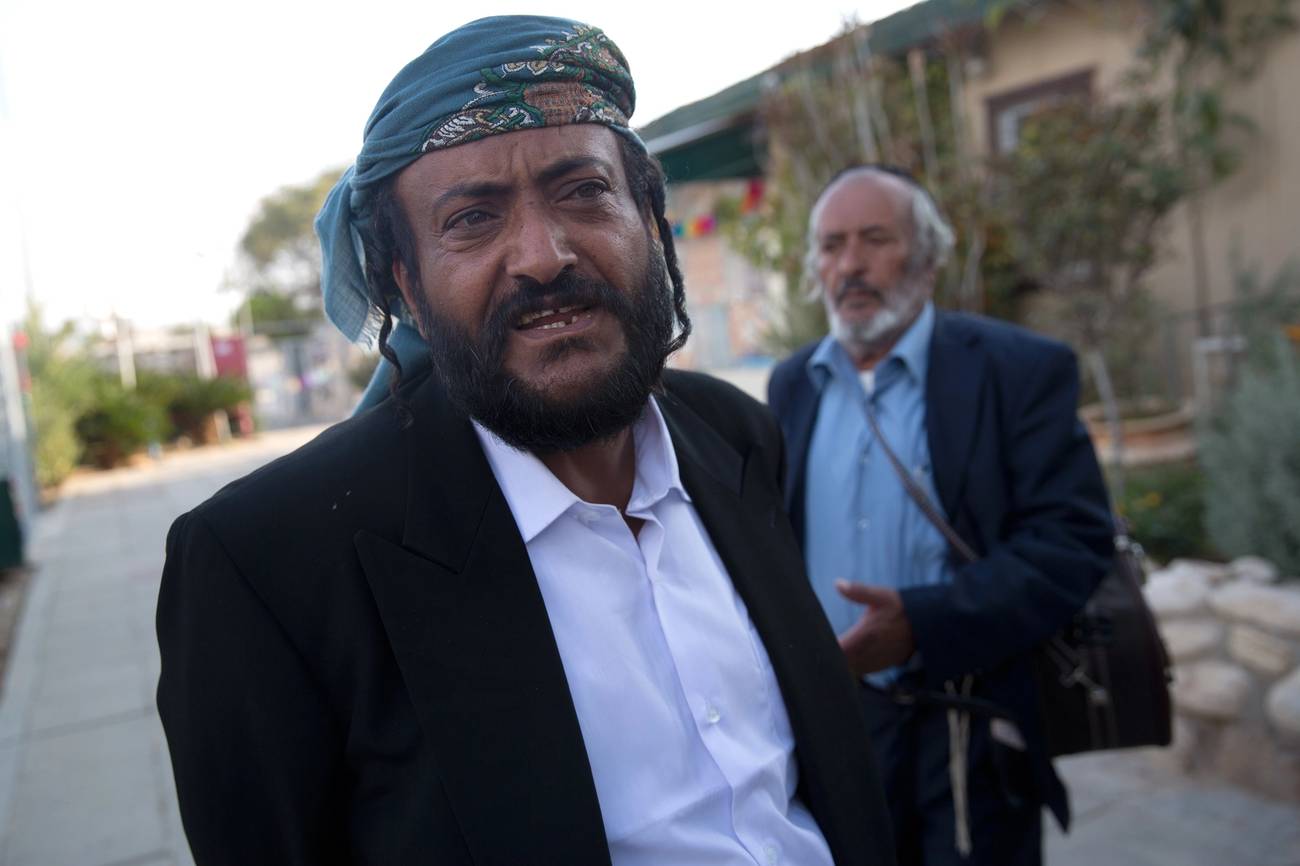A Final Push to Free Yemen’s Remaining Jews
Their plight is clear. Who will help them?




As a diasporic people, the call to aid Jewish lives has been echoed throughout the world over millennia. Of course, the inherent threat—past or present—to Jewish liberties varies significantly from place to place. Within my specific Sephardic community, it is more subdued, present in a weariness of outsiders and a fierce commitment to tradition, family, and a common Brooklyn ZIP code. And yet, our defining characteristic is in itself a contradiction; we are inherently suspicious of our surroundings and simultaneously inclined to succeed in them. It’s a tendency best attributed to our roots in Arab lands, where our ancestors lived for centuries, largely in peace with their neighbors. That changed in 1947, after the U.N. voted on the partition plan.
In Syria, the government enforced harsh rules against its Jewish population, prohibiting its residents from immigrating and moving between villages. Businesses were boycotted and driver’s licenses were revoked. An estimated 7,000 Jews escaped Syria between 1948 and 1970, many of them to New York.
By the time the ’90s rolled around, life on the adopted street of Ocean Parkway was good for Brooklyn’s Syrian Jews. The community was flourishing and for many of its eldest members, life in Syria had become a distant memory. In fact, many were unaware that an estimated 3,000 Jews still remained in Syria, largely in the city of Damascus. Many believed that surely their brethren could leave if they really wanted to. At the very least, they could cry out for help. But fear of Syrian government retaliation kept them quiet.
Finally, in 1994, after six years of conjoined efforts pioneered by Brooklyn’s Council for the Rescue of Syrian Jews and human rights activist Judy Carr, then President Hafez al-Assad granted them permission to leave. Morris Missry remembers this well. He worked for Marcos Zalta in 1990. Zalta was then a young Syrian Jewish attorney who as president of the Council for the Rescue of Syrian Jews, virtually dedicated his early professional career to the cause. Along with co-president Alice Sardell, he staged rallies and lobbied both U.S. and international governments feverishly over the course of the early ’90s. A button from a 1991 New York rally, “reminds me that we can change the world.”
In 2015, Missry received a link from a friend (and disclaimer, my father) Raymond Levy, to a New York Times article that detailed the predicament of Yemen’s remaining Jews. “I immediately harkened back to days of being a kid, sitting in the [Shaare Zion] dome and listening to our leaders speak about saving Soviet Jews.” He recalled the years between 1992 and ’94, when hundreds of Syrian Jewish refugees landed at JFK and made their way to the Midwood section of Brooklyn, where it seemed their lives had been replanted. CC’ed on the email were Joe Sitt and Rabbi Raymond Sultan, the founder and executive director of the Sephardic Heritage Museum, respectively. Although none of the three has any familial connection to Yemen or its shrinking Jewish population, they decided together that something had to be done to help them.
Operating under the Yemen Rescue Mission, an initiative of the Sephardic Heritage Museum, Sitt, Missry, Sultan, and others organized parlor meetings and fundraisers within the community. They contacted family members in the United Kingdom and United States, hoping they could speak to their relatives on their behalf. By then, the situation in Sanaa, where most of the remaining families lived, was worsening. Houthi rebels controlled the area. “I do believe we were uniquely poised to help them,” Sultan told me. “We understood their mentality. You can’t openly say you want to leave. That’s probably the most dangerous thing you can say.”
Still, Sultan was initially met with apprehension from many of the Jews he hoped to free. “It was a very psychologically challenging move,” he explained. “They didn’t know who we were. They were suspicious and paranoid. There was a lot of fear.”
In early 2016, nearly a year after the initial email had made its rounds, two families totaling 11 people were rescued from the city of Raida. Missry was at dinner when he received the call from Rabbi Sultan. “I excused myself from the table and began to cry.” In March 2016, 18 Yemeni Jews were brought to Israel, culminating a yearlong effort that joined the U.S. State Department and the Jewish Agency for Israel.
But even the joy brought danger. Prime Minister Benjamin Netanyahu posed with members of the group and an ancient Torah scroll that was smuggled out of Yemen, in what was soon a widely circulated photo-op. As a result, Libby (Levi) Salem Mousa Merhabi, the Jewish man still in Yemen suspected to have helped smuggle the scroll out, was jailed. He remains there today and his mother continues to beg for his release.
U.S. Rep. Max Rose, whose congressional district (which includes Staten Island and parts of Southern Brooklyn) houses one of the largest Yemeni communities in the United States, sees an opening for progress. “We have an opportunity here as a result of the Abraham Accords for the remaining Yemeni Jews to be put in a better situation,” he told me, stressing that “while the resources from the Sephardic community in my district have been tremendous, we really need to rally the international community as well.”
As of today, an estimated 26 Jews remain in Yemen. This figure does not include a number of women who have been kidnapped as young girls and remain hostages in their own homes, many of them now with children of their own. I recently spoke to one woman who escaped Yemen for London in 2007 before coming to the States. She asked to remain anonymous, so as to not jeopardize the life of her sister, who was kidnapped as a young woman when the family of nine sisters all lived in Raida. But she spoke fondly of her childhood spent in the small village of Beni Abt. The family had some animals, cows, goats, and a few chickens. Her sisters would rise as early as 4:30 in the morning to tend to them. When she was 8 years old, she and two of her sisters moved to Raida. There was a small school where she “learned tehilim all day,” although they never spoke Hebrew outside of school. Her parents joined them in Raida a few years later. They moved into a big house, complete with beds, sheets, showers, and baths—“like here,” she said. “We went to stores and schools. People were nice. There was some violence in the neighborhood, but that was all normal.”
Everything changed after a cousin and sister were kidnapped, “just because they were Jewish.” Her father whisked her and another sister to Sanaa, where they remained in a hotel for four months while he secured visas to the United Kingdom. “I just want to help the people get out,” she told me. “I want to do everything I can.” As it was for the Jews in Syria in the 1990s, the fear of government retaliation is great, and tangible. But make no mistake, the plight of Yemen’s Jews is clear and a global Jewish and governmental response should follow.
Esther Levy Chehebar is a Brooklyn-based writer. She is currently at work on a novel loosely inspired by her Syrian Jewish upbringing.